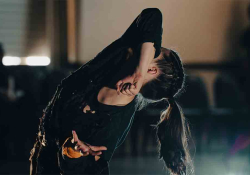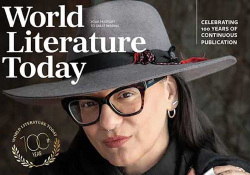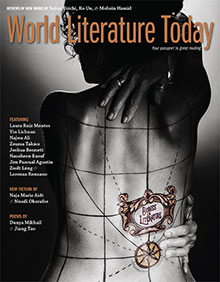Editor’s Note
I noticed he was wearing white summer gloves and knew at once it was for poetry’s stigmata.
—Zsuzsa Takács, “Masters Whose Doorsteps”

Psalm 51, known to many by its opening lines in Latin, Miserere mei, Deus—“Have mercy upon me, O God,” in the King James Version—is couched in penitential humility: “For the lead player, a David psalm, upon Nathan the prophet’s coming to him when he had come to bed with Bathsheba.” In a note to his 2007 translation, Robert Alter points out the barbed pun in these lines: “The Hebrew verb used for both Nathan and David is ‘to come to [or ‘into’],’ but in the former instance it refers to the prophet’s entering the king’s chambers, whereas the latter instance reflects its sexual sense, to have intercourse with a woman (probably intercourse for the first time). The strong character of this poem as a confessional psalm led the editors to attribute it to David when he was stricken with remorse after Nathan rebuked him for sleeping with Bathsheba and murdering her husband” (The Book of Psalms).
What does a psalm from the Hebrew Bible have to do with this issue’s marquee theme, “Bodies in Literature”—other than our primordial fascination with sex and violence? Since the earliest days of civilization, writers have shared with painters, sculptors, dancers, and actors—even more than a solicitude for their own bodies—an affinity for bodies other than their own, and the nine authors included in the current issue showcase an astonishing array of texts that investigate the embodied human condition. So much of what we think we know about ourselves is mediated by other bodies in proximity to ours, both real and virtual. Often, that means putting the body in harm’s way; other times, it might reveal, and revel in, the pleasures to be found in the delights of earthly existence. In the section that begins on page 40, writers help us see their subjects as more than faceless or nameless bodies in the crowd.
Throughout art history, there is a long tradition of male painters using female models for their portraits—including Henri Matisse, as discussed in Najwa Ali’s essay “Matisse / Odalisque / Modernity,” and Egon Schiele, who appears in Zsuzsa Takács’s poem “On Vision.” In doing so, painters both fetishize and immortalize the disincarnate subjects on their canvases. In 1912, when Schiele painted Portrait of Wally Neuzil at the age of twenty-two, Neuzil, “the girl-child with the big mane,” was herself only sixteen at the time. Later, she would list her occupation as salesgirl, cashier, or mannequin but never as Schiele’s secretary, lover, or model. As Ali writes in her essay, for painters like Matisse and Schiele, theirs is “the art of making things abstract, the line more bold, the color dense. Of lifting the obvious into something else. Beauty. The girl is not just a girl.” When “inside the frame” of the painter, the odalisque’s body makes the “splendour of the East,” according to Ali, “accessible, visible, recordable” (page 44).
What lies outside the frame of such representations, whether visual or verbal? In Psalm 51, the text brackets David’s crime to focus, instead, on the speaker’s supplication to be purified, washed, made “whiter than snow.” “Blot out my transgressions,” implores the king (or his psalmist), “. . . that the bones which thou hast broken may rejoice.” At the end of the psalm, the penitent’s “bloodguiltiness” for Uriah’s murder is replaced on the altar by the blood of young bulls. In The Cambridge Companion to the Body in Literature (2015), Sander Gilman writes that such symbolic substitutes are perhaps “the key to all of our Western readings of death in literature after all.”
Likewise, the human form is often a screen on which writers and artists project their gravest fears as well as their deepest desires. Look into Wally Neuzil’s eyes on page 47. Was Schiele the “painter of death” that Takács, in her poem, imagines him to be? Or did he immortalize Neuzil as “the Viennese Mona Lisa”? No matter how we look at it, the body has a way of showing up both inside and outside the frame.
Daniel Simon
Publisher’s note: Special thanks to our editorial assistant, Sara Wilson, who wrote the prospectus for the body section over a year ago and helped shape its evolution. Her own preface to the cover feature appears on page 41.









